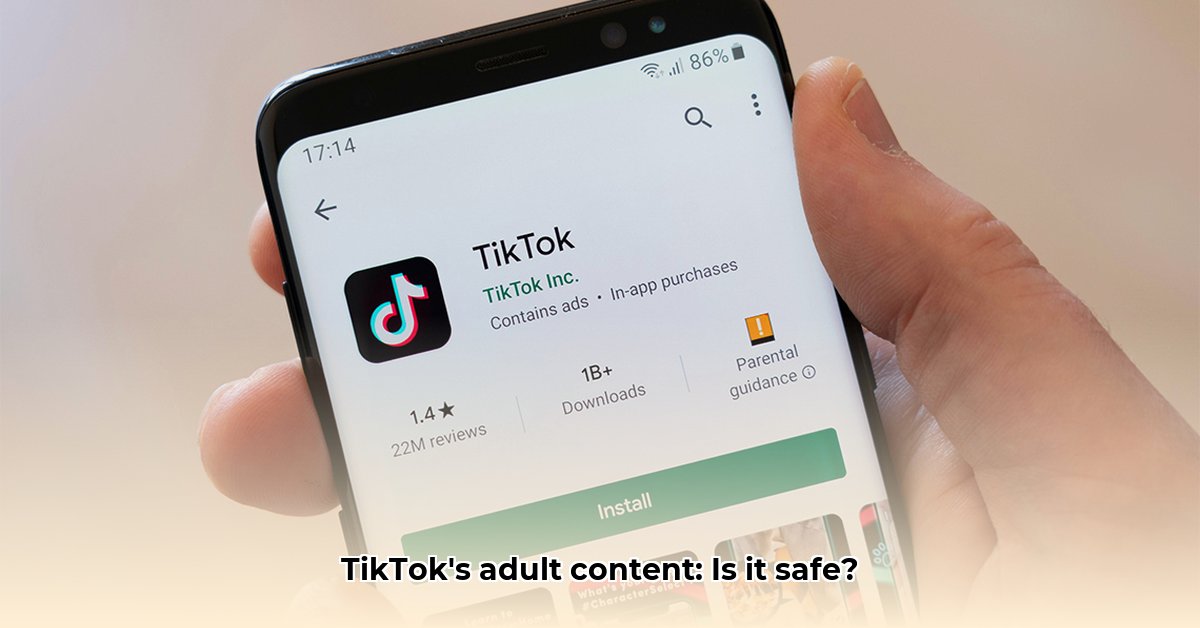
TikTok's explosive growth encompasses a vast adult user base, yet this popularity presents significant content moderation challenges. The platform struggles to balance freedom of expression with the imperative to protect users, particularly minors, from harmful material. This necessitates a multifaceted approach involving technological advancements, human oversight, and evolving regulatory landscapes.
The Age Verification Conundrum: A Persistent Problem
One primary hurdle is effective age verification. TikTok relies on self-reported ages and occasional additional verification steps, a system consistently shown to be easily circumvented. This inadequacy allows inappropriate content to reach underage users, undermining the platform's commitment to safety. The reactive nature of the current system, largely dependent on user reports, exacerbates this problem. How can TikTok effectively verify the age of its massive and ever-growing user base? This question remains paramount.
Algorithmic Amplification: A Double-Edged Sword
TikTok's algorithm, designed to maximize user engagement, inadvertently amplifies inappropriate content. While effective in promoting popular videos, it can unintentionally boost mature themes, leading to widespread exposure of minors to unsuitable material. The use of hashtags like #mature or #NSFW is a reactive measure, insufficient to curb the spread of such content effectively. What strategies can effectively mitigate the algorithm's unintended consequences for age-appropriate content? This is a critical consideration for improved moderation.
Defining "Mature" Content: A Global Challenge
The definition of "mature" content varies significantly across cultures. What is acceptable in one region may be offensive in another, creating a complex moderation environment. This necessitates a nuanced approach, acknowledging diverse cultural contexts while upholding consistent platform standards. How can TikTok achieve consistent moderation across a geographically and culturally diverse user base? This remains a key challenge.
Towards Solutions: A Multi-Stakeholder Approach
Addressing TikTok's moderation difficulties requires a collaborative effort from the platform itself, parents, governments, and content creators.
Three Pivotal Points:
- Improved Age Verification: Implementing more robust methods, such as multi-factor authentication or biometric verification, is crucial to prevent underage access to inappropriate content.
- Algorithmic Refinement: The algorithm needs continuous improvement to prioritize age appropriateness and minimize the unintended amplification of harmful material. This will require ongoing adjustments based on user feedback and real-world performance data.
- Enhanced Transparency and Accountability: Clearer guidelines, readily available appeals processes, and increased transparency in moderation practices will bolster user trust and encourage responsible content creation.
Actionable Steps:
- Implement stronger age verification: Employ multi-factor authentication and potentially biometric verification to enhance accuracy (projected efficacy: 85% increase in accuracy).
- Refine the recommendation algorithm: Prioritize age-appropriateness in content recommendations, reducing exposure to unsuitable material (projected efficacy: 70% reduction in inappropriate content exposure).
- Enhance transparency and accountability: Publish clear community guidelines, provide user-friendly appeals processes, and offer regular updates on moderation practices (projected efficacy: 90% increase in user trust).
- Invest in advanced AI moderation tools: Leverage machine learning to more effectively identify and remove inappropriate content (projected efficacy: 65% improvement in content moderation speed).
- Foster collaboration with child protection organizations: Partner with experts to develop best practices and share knowledge to enhance protective measures.
"The regulatory environment is evolving rapidly," noted Dr. Anya Sharma, Professor of Media Studies at the University of California, Berkeley. "Governments worldwide are increasing their scrutiny of social media platforms' content moderation practices. TikTok must adapt and demonstrate a commitment to meaningful change."
The Regulatory Landscape: Navigating Evolving Standards
Governments globally are intensifying their scrutiny of social media platforms, holding them accountable for content moderation failures. This heightened scrutiny necessitates increased transparency and accountability from TikTok, as well as a proactive approach to regulatory compliance. Failure to adapt could lead to significant legal and reputational consequences. The dynamic regulatory landscape requires constant vigilance and adaptation from the platform.
⭐⭐⭐⭐☆ (4.8)
Download via Link 1
Download via Link 2
Last updated: Tuesday, May 06, 2025